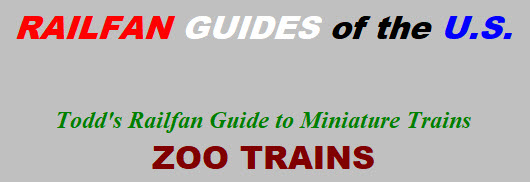
In General
the Baltimore Zoo
the Louisville Zoo
the Portland Zoo
the St Louis Zoo
the Traverse Train
RAILROAD SIGNALS HOME
This page covers the numerous Park and Zoo Trains around the U.S., of which there have been "oodles", both past and present.
If we make an attempt to include all of the park trains of yesteryear, this page may never be complete! For instance, in my home town of Baltimore, the Baltimore Zoo used to have a stainless steel train, patterned after the GM Aerotrain of the early 60's. That was sold to a fellow out in Sykesville MD around 1990 or so, and the train (when I stopped by around 2009), was still in his barn - I hope it is still with us.
And before that, there was Gwynn Oak Park, which closed in the mid 70's - that train was sold to the Luskin family (Luskin's - now The Big Screen Store), and at last report, the train was somewhere south of Baltimore in a storage location where the roof was caving in and the train was going to sh..... This came from the fellow that used to own PURKEY's train store in Sykesville, and had seen the train in the early 2000's. In a 2022 update, the train has been "saved" and moved to another location, but it is going to require A LOT of "fixin".
If you have any "inside" information such as this, please check out my contact page here.
Acknowledgements:
Denver Todd
Steve Morgan
Wikipedia
Websites and other additional information sources of interest:
https://en.wikipedia.org/wiki/Washington_Park_and_Zoo_Railway
https://www.marylandzoo.org/visit/rides-activities/
Baltimore MD - Baltimore Zoo
The Zephyr’s 10-minute ride will leave the train station near the Zoo’s Farmyard and move on the one-mile track behind the African Journey returning to the station through a beautiful section of the Jones Falls Watershed. The locomotive is a detailed scale replica of the original CP Huntington Train built in 1863 and was manufactured by Chance Rides Manufacturing, Inc., Wichita KS. The train is open daily from 10am-4pm year round, weather permitting. Rides are $5 per rider ($4 for Zoo Members) – in order to receive member pricing you need to present your membership card. The train is wheelchair accessible but cannot accommodate strollers or motorized scooters. (from the Baltimore Zoo's website)
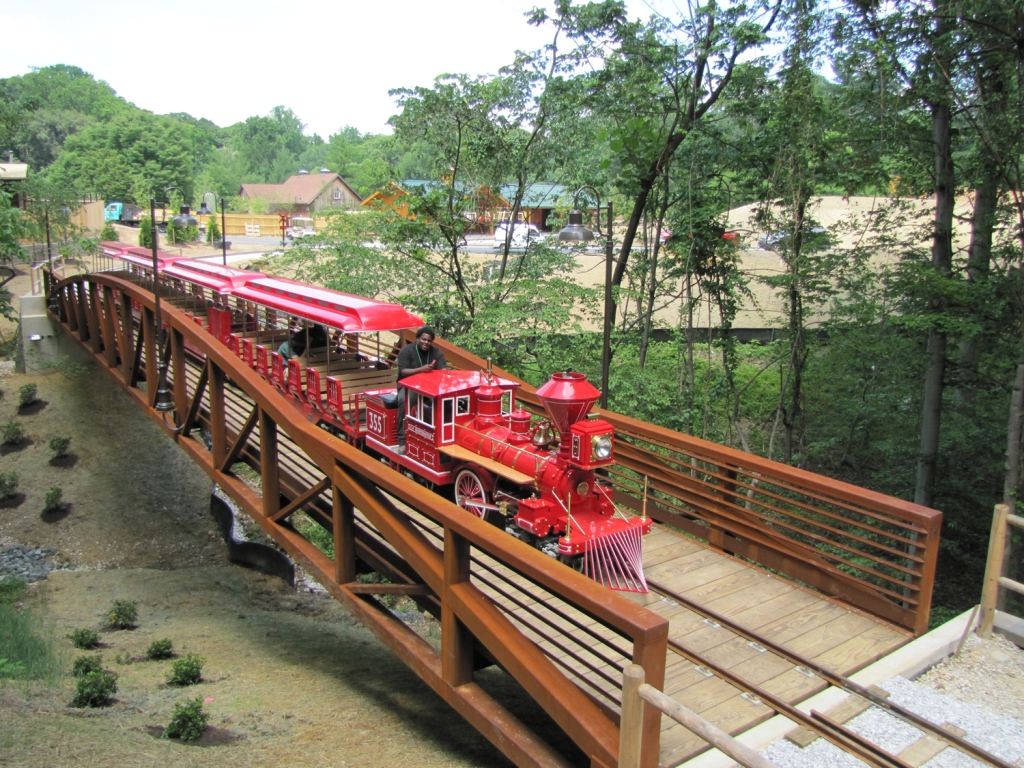
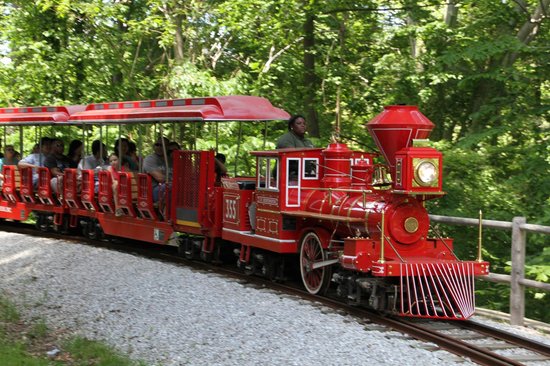
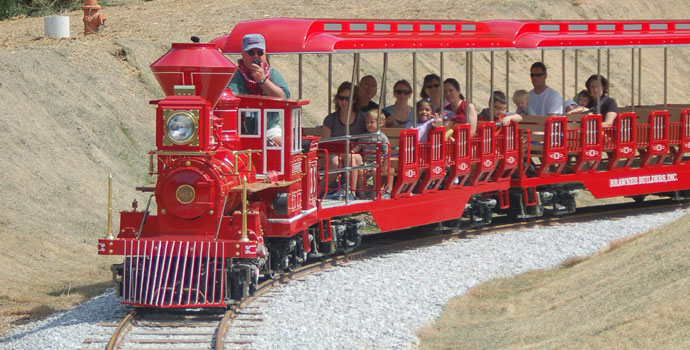
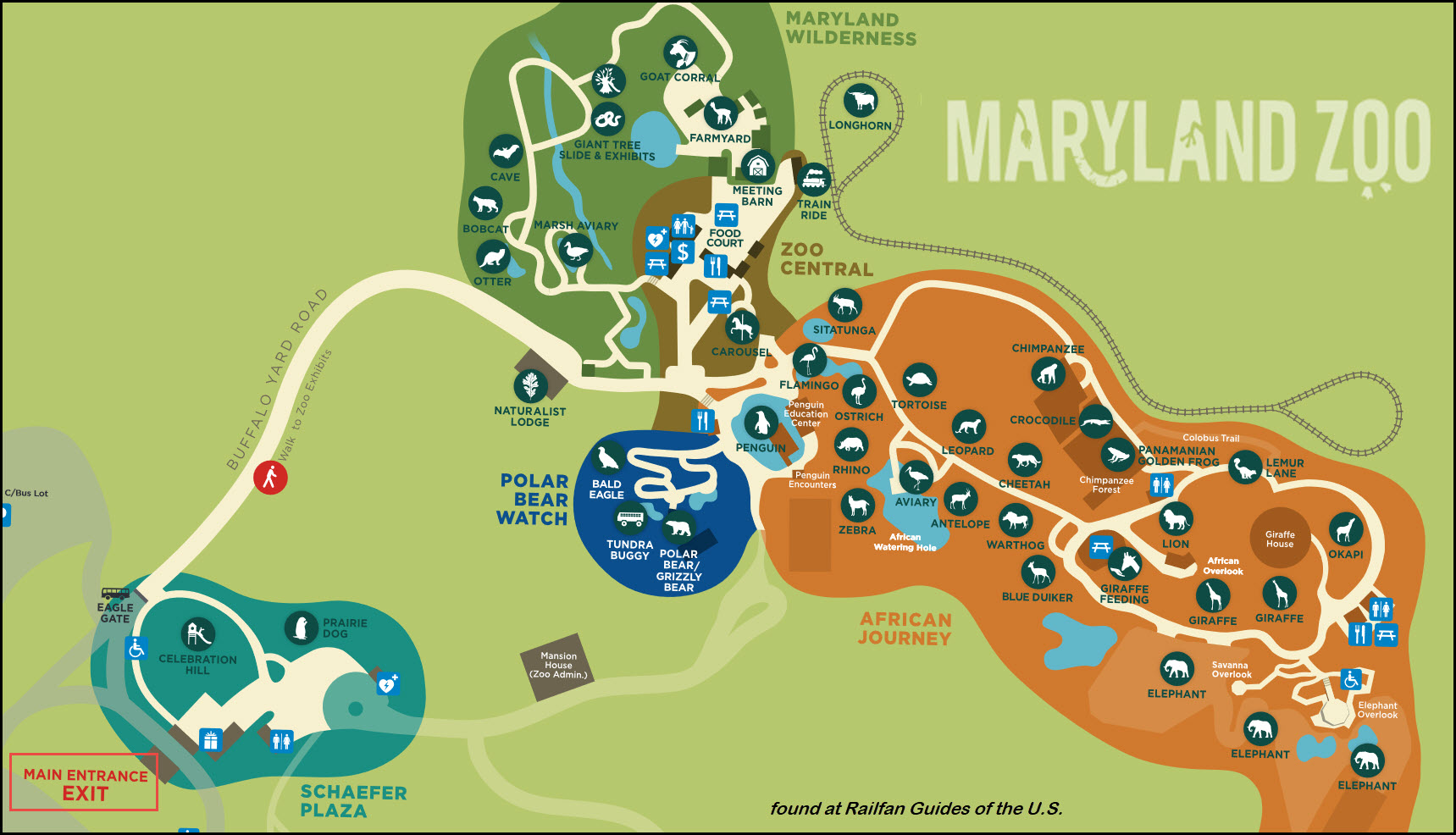
Louisville KY - Louisville Zoo
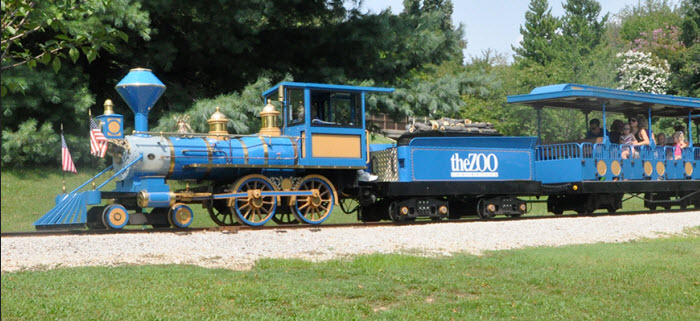
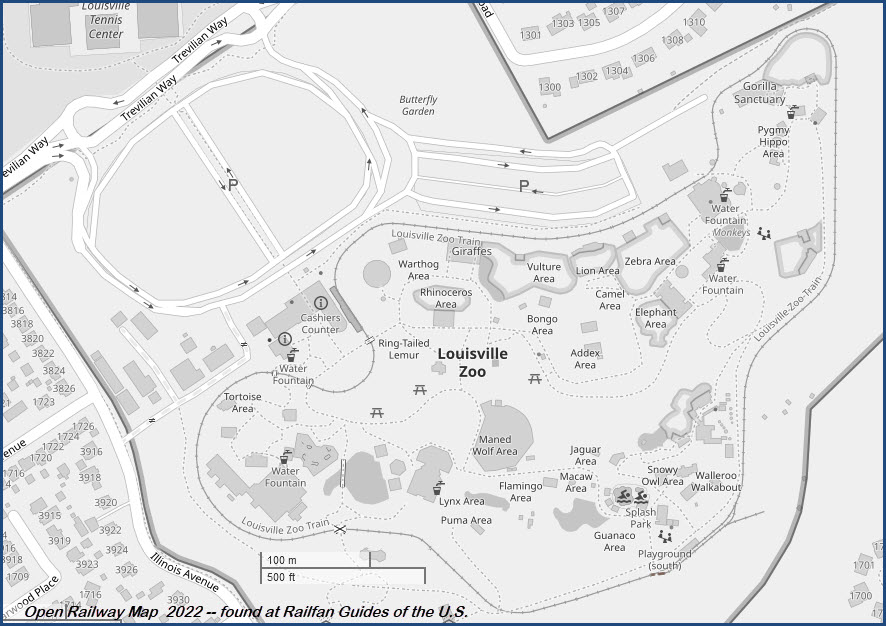
Portland OR - Portland Zoo
The Zooliner is a 5/8-scale replica of the diesel-powered Aerotrain, which is famous for its unusual shape that was influenced by automobile designs of the period when it was built, considered futuristic at the time. The Zooliner was built in 1958, its mechanical parts by Northwest Marine Iron Works and its streamlined bodywork by the H. Hirschberger Sheet Metal company of Portland. It first carried passengers in June 1958. The Zooliner is powered by a 165 horsepower (123 kW) diesel engine with hydraulic transmission, which is WP&ZRy locomotive No. 2. The brakes are pneumatic, the same as on its full-size namesake. The train includes four or five streamlined passenger coaches pulled by matching locomotive No. 2. The rearmost car was rebuilt in late 2005 to resemble a dome car, in connection with installation of a larger and more powerful wheelchair lift. Track gauge is 30 inches, 2'-6".
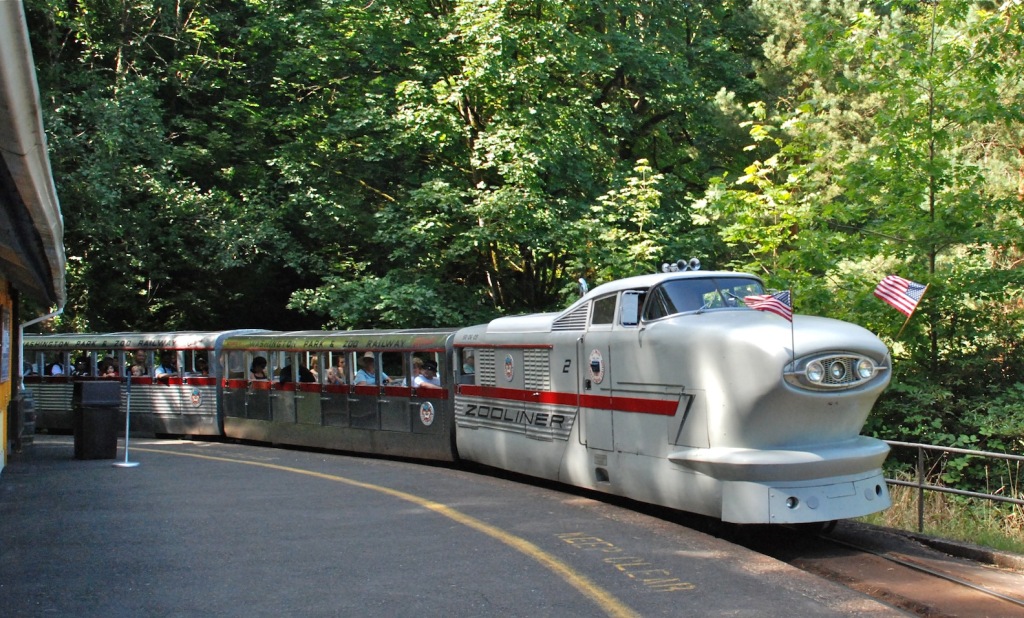 Steve Morgan via Wikipedia
Steve Morgan via Wikipedia4-4-0 No. 1 Oregon is a 5/8-scale replica of a classic American 4-4-0 steam locomotive of the 19th century. It was built in 1959 by the Oregon Locomotive Works. It is a scale copy of the 4-4-0 locomotive, Reno, of Nevada's Virginia & Truckee Railroad (built by Baldwin Locomotive in 1872). Unlike the original, No. 1 Oregon uses oil as a power source, but it is still a real steam locomotive (not a diesel that is made to look like a steam locomotive). It weighs about 8 tons. It first carried passengers on June 20, 1959, on the temporary Centennial Exposition line in North Portland, but was moved to the then-new Portland Zoo site around the end of the summer, when the exposition ended.
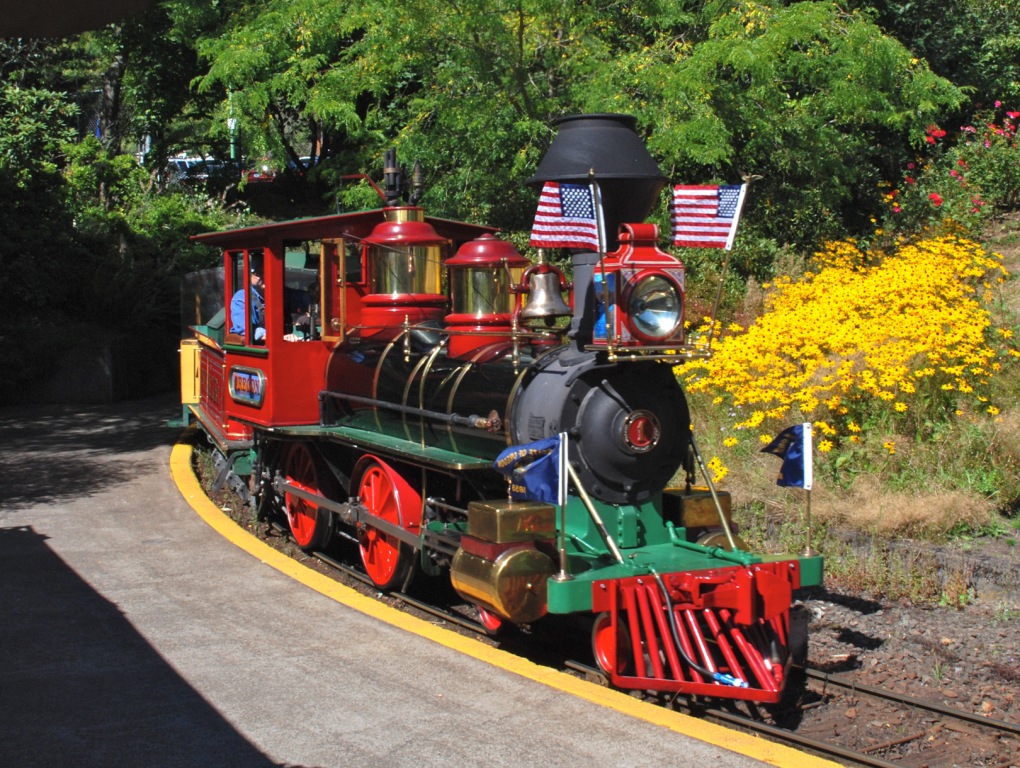 Steve Morgan via Wikipedia
Steve Morgan via WikipediaWashington Park & Zoo Railway locomotive No. 5, the Oregon Express, entering the zoo grounds from the woods of Washington Park. The train now known as the Oregon Express is the only one that is not a copy of a real train. It is a diesel locomotive, WP&ZRy No. 5. It was built in 1959 by Northwest Marine Iron Works/H. Hirschberger and originally was made to look like a steam train. It was later rebuilt to a relatively more modern style, with a slanted front end. The color scheme and decorative motif of the train have been changed a few times, as has the train's name, which has gone from the Circus Train to the Orient Express to the Oregon Express.
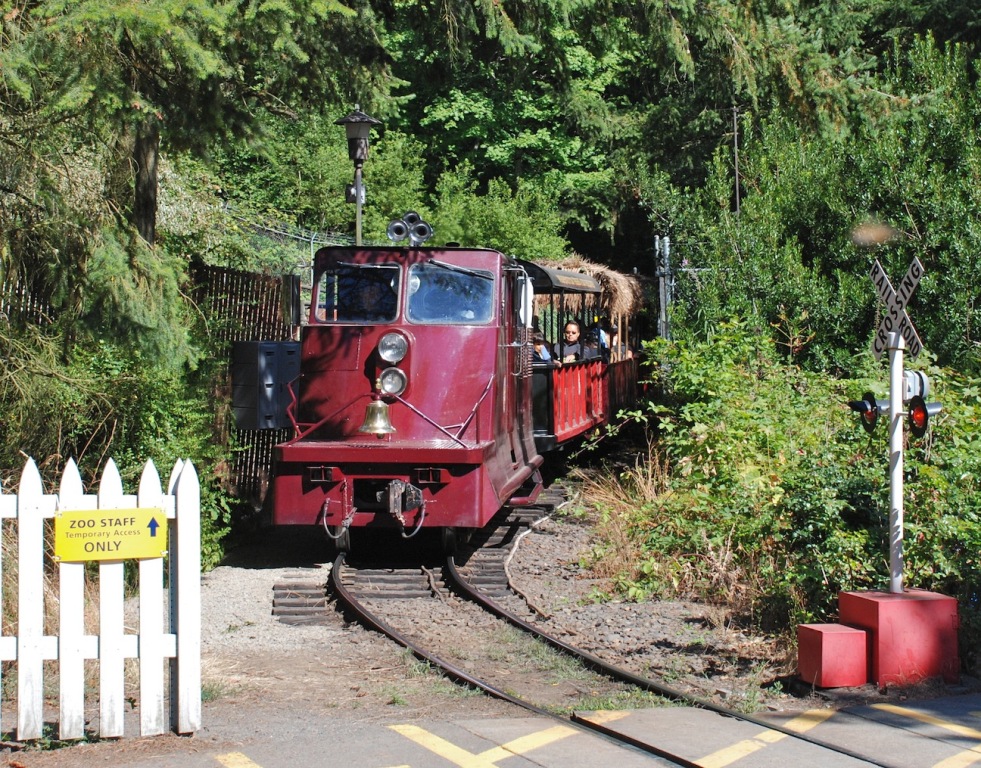 Steve Morgan via Wikipedia
Steve Morgan via Wikipedia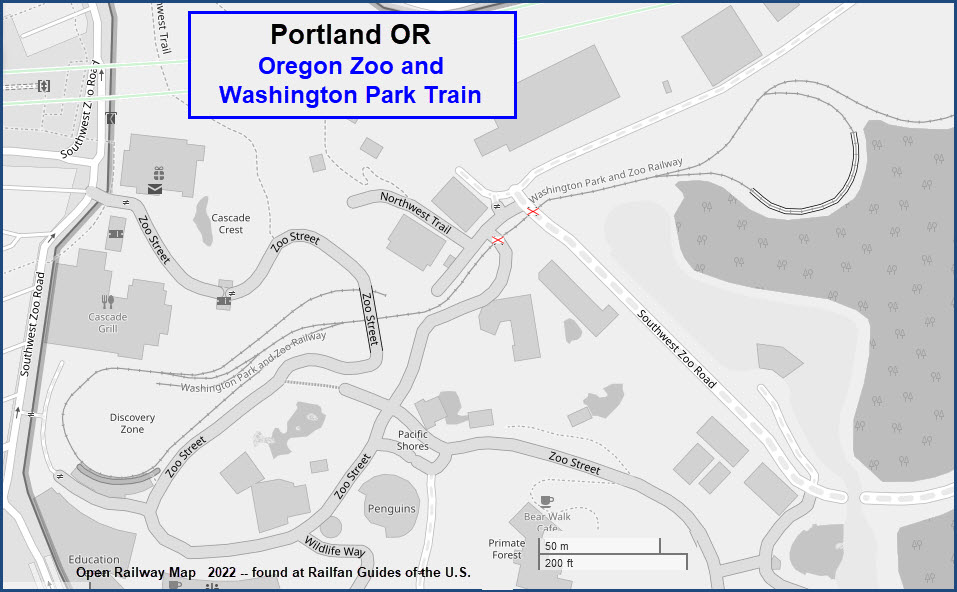
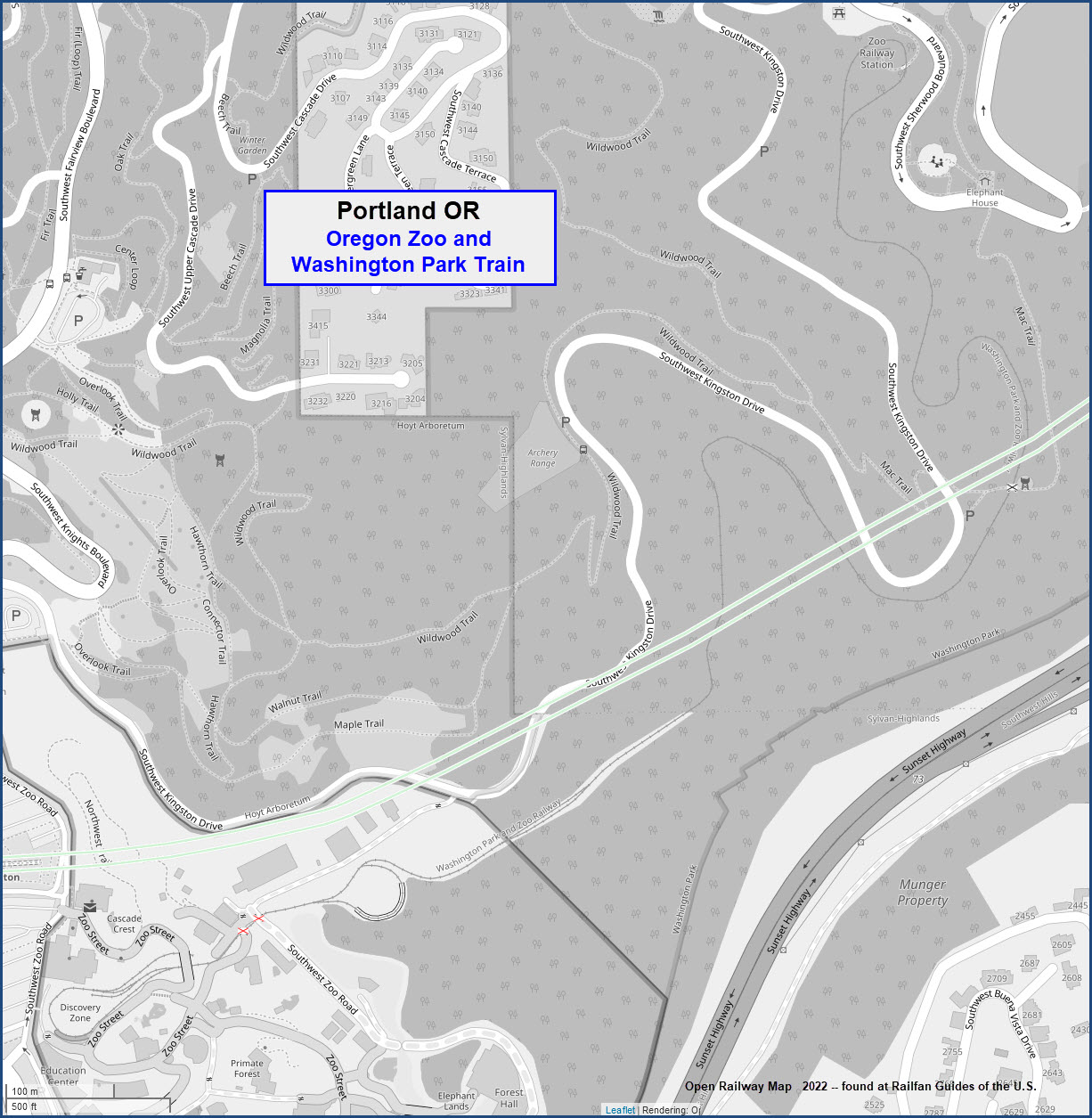
St Louis MO - St Louis Zoo
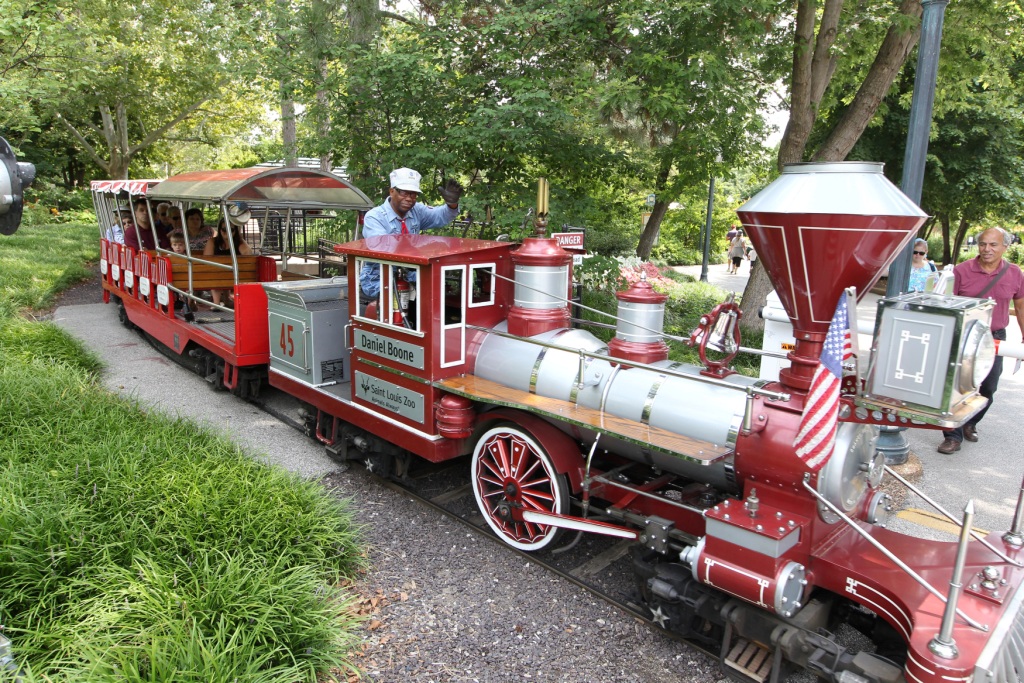
Traverse City MI - Traverse Steam Train
As of 2007 or so, the Traverse Zoo Train no longer had a zoo to run around, as PETA had a hand in shutting the zoo down. The train stopped running after the 2011 season. Then, in 2012, the Northwest Michigan Engine & Thresher Club obtained the engine, moved it to their place one mile west of Buckley MI.
More info can be found at:
The September/October issue of Live Steam & Outdoor Railroading Magazine, page 5
http://www.buckleyoldengineshow.org/spirit-of-traverse-city/
http://www.railroadfan.com/phpbb/viewtopic.php?f=3&t=21177
and https://railfanguides.us/mi/traverse/index.htm
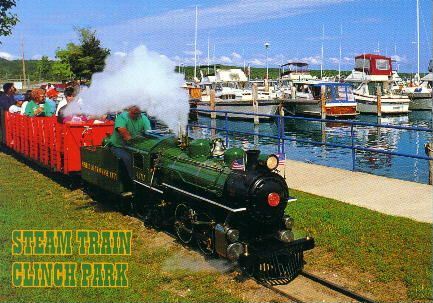
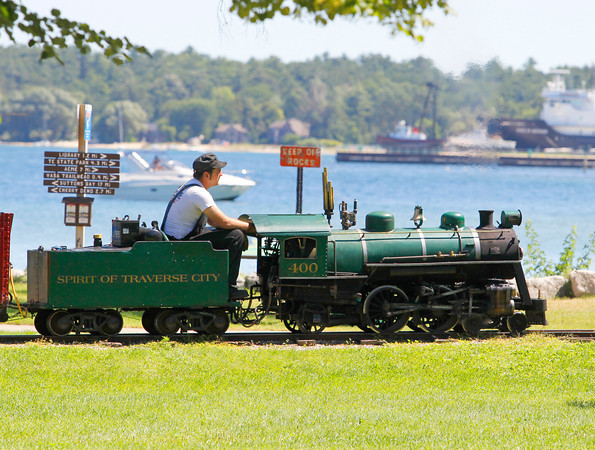
Disclaimers:
I love trains, and I love signals. I am not an expert. My webpages reflect what I find on the topic of the page. This is something I have fun with while trying to help others.
Please Note: Since the main focus of my two websites is railroad signals, the railfan guides are oriented towards the signal fan being able to locate them. For those of you into the modeling aspect of our hobby, my indexa page has a list of almost everything railroad oriented I can think of to provide you with at least a few pictures to help you detail your pike.
If this is a railfan page, every effort has been made to make sure that the information contained on this map and in this railfan guide is correct. Once in a while, an error may creep in :-)
My philosophy: Pictures and maps are worth a thousand words, especially for railfanning. Text descriptions only get you so far, especially if you get lost or disoriented. Take along good maps.... a GPS is OK to get somewhere, but maps are still better if you get lost! I belong to AAA, which allows you to get local maps for free when you visit the local branches. ADC puts out a nice series of county maps for the Washington DC area, but their state maps do not have the railroads on them. If you can find em, I like the National Geographic map book of the U.S..... good, clear, and concise graphics, and they do a really good job of showing you where tourist type attractions are, although they too lack the railroads. Other notes about specific areas will show up on that page if known.
Aerial shots were taken from either Google or Bing Maps as noted. Screen captures are made with Snagit, a Techsmith product... a great tool if you have never used it!
By the way, floobydust is a term I picked up 30-40 years ago from a National Semiconductor data book, and means miscellaneous and/or other stuff.
Pictures and additional information is always needed if anyone feels inclined to take 'em, send 'em, and share 'em, or if you have something to add or correct.... credit is always given! Please be NICE!!! Contact info is here
Beware: If used as a source, ANYTHING from Wikipedia must be treated as being possibly inaccurate, wrong, or not true.
RAILFAN GUIDES HOME
RAILROAD SIGNALS HOME
NEW 01/11/2018
Last Modified
09-Dec-2022